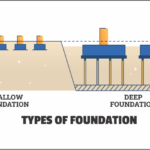Sustainable Lawn Care: Eco-Friendly Tips for a Greener Yard
Recently, I’ve realized that the earth and its ecosystems need us to be more mindful in our interactions with nature, including lawn maintenance. I enjoy my peace of mind at my residence but preserve the natural aesthetics of the area at the same time.
I discovered that using the right grass type can significantly contribute to hard landscaping. For example, soybean grass, native to the Midwest, is an excellent choice because it can fix nitrogen in the soil, benefiting surrounding plants. It is also exciting to note that the safe procedures for harvesting grasses can also be used in living areas.
1. Choose the Right Grass
There are several natural ways to maintain your lawn. The foundation of a sustainable lawn starts with selecting the suitable grass species that suit your climate and soil conditions. From my experience, the best choice is usually to use grass native to the area, as it is already adapted to the local climate and requires less maintenance.
For example, soybean grass is native to the Midwest and is an excellent bunchgrass nitrogen fixer in that ecosystem. It can meet the system’s nitrogen needs by absorbing soil nitrates and converting atmospheric nitrogen into organic matter. Choosing suitable grass also helps reduce water-related issues, such as the need for excessive watering, fertilizers, and pesticides.
2. Practice Proper Mowing Techniques
Today, almost all house owners have to deal with the mowing side of maintaining their greenery at home. Undoubtedly, mowing is a good part of your garden treatment, but doing it wrong can affect the health and endurance of the lawn. First, I think you should:
- Keep your grass longer (about 3 inches) to promote more profound root growth and natural weed suppression.
- Add the blade before using a sharp mower and make clean cuts, thus reducing stress on the grass.
- Don’t have your gardener remove the grass; instead, let them stay on the lawn so they can restore the lawn’s essence to the soil.
- If you are serious about improving the environment, consider buying a manual or electric mower that produces fewer fuel emissions.
3. Water Wisely
This point must be stressed more, whether watering a summertime garden or lawn. To make matters more precise, I have discovered that it’s this that consumes most of the water and energy, but additionally, it’s the main reason for shallow roots and increased susceptibility to pests and diseases if the watering process is not well carried out. A proper sustainable irrigation of your lawn involves following these principles:
- To encourage the plants to become deeper root runners, water the plants less often and add more water to every spot.
- Do your watering program in the morning to minimize the amount of moisture that escapes the earth.
- Figure out when the plants need to be watered using a rain gauge or moisture meter.
- If the lawn area is small, consider installing a rain barrel to catch rainwater and use it as a water source.
4. Embrace Natural Fertilizers
The positive effects of organic fertilizers on soil health have been found in this country. I now know that non-toxic fertilizers are eco-friendly and also great for soil health in the long run.
People who apply artificial fertilizers may suffer from the side effects and just slug on them. Organic substances like compost and plant-based or animal-based fertilizers can also be used. Organic fertilizers such as compost and grass clippings are natural alternatives to chemical fertilizers. Mulched leaves, in their turn, can also be a good source of natural nutrients.
5. Manage Pests Naturally
Pesticides can severely harm beneficial insects, animals, and even humans. My innovative method of finding solutions to all sorts of issues around the home, including pest management work, is using my practical experience. One such way is:
- Allowing beneficial insects like ladybugs and mantises to have them in your garden that will feed on those pests
- Adopting an organic insecticidal soap or neem oil application for specific pests that require chemicals
- The development of pest resistance is possible when planting grass varieties that are naturally pest-less (i.e., grass varieties that contain chemicals that drive away pests )
- Keeping a healthy combination of different species in your garden
6. Aerate and Dethatch
Applying proper and integrated crop and livestock production technologies is my research contribution to the farming system. It’s a fantastic practice to perform both aeration and dethatching of your lawn, thus fostering soil health and lessening the need for outside chemical interventions.
The location is crucial, and correct implementation results in the company achieving the desired outcome. Proper aeration protocols allow the grass to grow vertically underneath, and optimal root development can occur. Thus, thatch removal at those times, if necessary, is done about 1-2 inches in depth to have the surfaces well-aerated since this procedure permits better penetration of the air and water of the land.
7. Incorporate Native Plants
Introducing native plants as an essential part of your lawn design will create a more sustainable ecosystem and bring some biodiversity. Further, indigenous plants are often less costly, require less watering and other maintenance, and provide food and habitat for local wildlife. An illustration of incorporating such native flora can be, for example, the formation of garden beds or borders with native shrubs and flowers alongside the lawns.
8. Reduce Lawn Size
One of the most powerful ways to go green is to smooch Egeras’s positive attitude with the practices of permacultural life. I’ve tried different options, such as substituting parts of my lawn with one of the following:
- Native plant gardens
- Vegetable gardens
- Xeriscaping (Low-water landscaping)
- Permeable hardscaping (e.g., gravel paths and patios)
All these ideas will make your garden more exciting and allow you to use fewer resources on their maintenance.
9. Use Manual Tools
For me, the preference for practical and non-polluting tools has been considered, as well as the development and growth of technology. Using sustainable mowing practices, I always make my land maintenance activities as close to nature as possible. Hand-powered tools like rakes, push mowers, and manual edgers can be used to cut vehicle emissions.
They can also be a great way to get your daily dose of exercise while taking care of your garden. On the other hand, people with extensive gardens could consider buying environmentally friendly devices such as electric lawnmowers and hedge trimmers.
10. Practice Grasscycling
Grasscycling is the process of leaving cut grass on the lawn after mowing. I have tried this interesting method on my lawn, which allows me to return nutrients to the soil without using any chemicals.
However, the appropriate disposal of grass clippings can provide all needed fertilizer for your yard, namely 25%, reducing thus the need for fertilizers and conserving water. Furthermore, they give as much healthcare for the closer and broader environment as the incorporated eco-friendly methods do.
Conclusion
The question of sustainable lawn care is not only one that raises the possibility of achieving it but is also something to aim for throughout the process. To maintain a flourishing and attractive environment, through the application of these sustainable and green practices, Glorious Builders has been able to protect nature and decrease the emission of harmful gases. Transitioning to sustainable lawn care will likely take some time; it is okay if you go slowly.
As our awareness of environmental protection and our responsibilities grows, it is time to incorporate sustainable development policies into our lifestyles and gardens. By adhering to eco-friendly lawn care tips, we can create green spaces that enhance our immediate surroundings and contribute to a more organized and sustainable planet.






